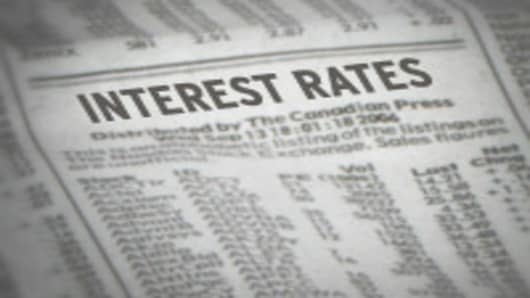Federal Reservepolicymakers open a two-day meeting Tuesday amid signs of caution for the recovery: Europe's debt crisis, an edgy Wall Street, cautious consumers, a fragile housing market and high unemployment.
That's why the Fed is sure to leave its key bank lending rate at record lows, keeping rates on certain credit cards and consumer loans low, too.
At the same time, the economy is offering some cause for optimism. The economy has been growing again for nearly a year. Manufacturing activity is strengthening. Businesses are spending more. And Fed Chairman Ben Bernanke has expressed confidence that country won't fall back into a "double dip" recession.
Yet he and other Fed officials acknowledge the recovery remains vulnerable to shocks. Mindful of the risks, the Fed is all but certain to keep its bank lending rate between zero and 0.25 percent. It's remained at that level since December 2008.
Assuming the Fed leaves rates alone, commercial banks' prime lending rate, used to peg rates on consumer loans, will stay about 3.25 percent. That's its lowest point in decades.
Super-low rates serve borrowers who qualify for loans and are willing to take on more debt. But they hurt savers. Low rates are especially hard on people living on fixed incomes who are earning scant returns on their savings.
Still, if rock-bottom rates spur Americans to spend more, they will help invigorate the economy. That's why the Fed also is expected to repeat its pledge—in place for more than a year —to keep rates at record lows for an "extended period."
"The Fed is looking at a struggling, not a booming, economy," said Kurt Karl, chief U.S. economist at Swiss Re. "It will be on hold indefinitely," he predicts.
With inflation tame, the Fed has leeway to keep rates at rates at record lows. In fact, given the risks to the recovery both at home and overseas, economists increasingly say the Fed probably won't start boosting rates until next year—or possibly into 2012. That's a change from just a few months ago, when economists thought the Fed would begin raising rates at the end of this year.
China's decision to let it currency, the yuan, rise in value could help sales of U.S. exports by making them less expensive to Chinese buyers. Doing so would help support the U.S. recovery and could help offset a decline in U.S. export growth to Europe. Still, questions remain about how much Beijing is willing to let its currency rise —and how quickly.
If the U.S. recovery were to flash signs of a relapse, the Fed would likely take other steps to get it back on course. The Fed has left the door open to resuming purchases of mortgage securities, a move that would drive down mortgage rates and bolster the housing market. It ended a $1.25 trillion mortgage-buying program in March.
A less likely step would be for the Fed to resume buying Treasury securities, a step it took during the crisis. Critics on Capitol Hill and elsewhere alleged the Fed was doing this to bankroll the federal government's record high deficits. The Fed said its government-debt buying program was aimed at lowering a range of rates to help revive the economy.
"There are still some arrows in the Fed's easing quiver," said Sherry Cooper, chief economist at BMO Capital Markets and BMO Nesbitt Burns.
But the economy would have to face a major threat for the Fed to roll them out. Some inside the Fed who worry that easy money could spur inflation are already uneasy. One of them, Thomas Hoenig, president of the Federal Reserve Bank of Kansas City, has dissented for three straight meetings from the Fed's decision to retain the "extended period" pledge.
Besides inflation, Hoenig has said he fears keeping rates too low for too long could lead to excessive risk-taking by investors, feeding speculative bubbles in the prices of assets like stocks, bonds and commodities.
After suffering the worst recession since the 1930s, the economy has been growing for about a year. Yet the pace hasn't been robust enough to drive down unemployment, now at 9.7 percent. The rate is expected to stay high through this year and next. As a result, consumers have been cautious about spending. In May, retail spending fell by the largest amount in eight months.
On top of that, debt woes by overextended countries in Europe have rattled Wall Street investors. Stock market losses are likely to keep consumers cautious.
"The Fed will strike an optimistic tone that the recovery is unfolding, but it will balance that message with all the risks," said James O'Sullivan, economist at MF Global.


